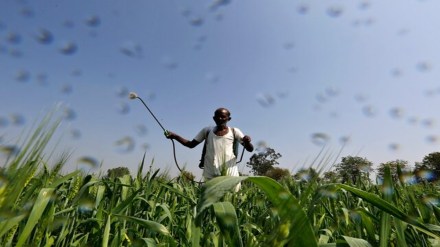To insulate farmers against rise in global prices of soil nutrients, the Cabinet on Friday approved a subsidy of Rs 37,216 crore for phosphatic and potassic (P&K) fertilisers for the kharif 2025-26 season (April-September) under the nutrient-based subsidy (NBS) mechanism.
The allocation for NBS for next kharif season is higher by Rs 13,000 crore from previous rabi season (2024-25). This means prices of non-urea soil nutrients largely used in oilseeds and pulses will remain unchanged for the next kharif season and farmers continue to get diammonium phosphate (DAP) at Rs 1,350/50 kg bag despite global volatility in the price.
As per the budget estimate (BE) for 2025-26, the fertilizer subsidy is projected at Rs 1.67 lakh crore (Rs 1.18 lakh crore for urea and Rs 49,000 crore for NBS), marginally less than FY24 revised estimate of Rs 1.71 lakh crore.
Sources said the government’s fertilizer subsidy could be higher than the BE next fiscal, out of the budgeted Rs 49,000 crore under NBS for FY26, over 75% has been allocated for the next kharif season.
The government has stated that DAP imports were impacted due to Red Sea crisis since the beginning of the year, as ships are rerouted and take an additional 6500 km through the cape of Good Hope, South Africa thus taking an additional 14 – 45 days for the consignment to reach Kandla port.
The MRP of DAP has remained at the same level since the Covid period. Given fluctuations in international prices of key fertiliser inputs like urea, DAP, Muriate of Potash (MOP), and sulphur, the government has factored in recent trends to ensure price rationalization.
The annual domestic production of DAP is around 4.5 – 4.8 million tonne (MT) against demand of 10 to 11 MT. The country imports DAP mainly from West Asia and Jordan while the domestic MoP demand is met solely through imports (from Belarus, Canada and Jordan, etc).
According to an official note, the subsidy on Nitrogen (N) has been fixed at Rs 43.02/kg , phosphatic (P) at Rs 43.6/kg, potassic (K) at Rs 2.38/kg, and Sulphur (S) at Rs 2.61/kg for 2025-26 kharif season.
“The subsidy would be provided to the fertilizer companies as per approved and notified rates so that fertilizers are made available to farmers at affordable prices,” according to an official statement. Usually the government announces subsidies under the NBS mechanism twice a year before the commencement of kharif and rabi crops sowing. However the government has been making special financial provision for additional subsidies in case of a spike in global prices.
Retail prices of phosphatic and potassic (P&K) fertilisers, including DAP were ‘decontrolled’ in 2010 with the introduction of a ‘fixed-subsidy’ regime as part of NBS mechanism.
Since March, 2018, the retail urea price has remained unchanged. The scheme allows retail prices of the key soil nutrient to farmers to be kept at 242 per bag of 45 kg, even as the current cost of production is around Rs 2,600/bag.
In terms of volume, imports account for a third of domestic soil nutrients consumption of around 60 MT annually.
